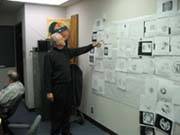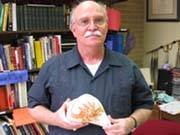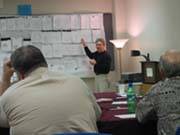Mississippian Iconographic Conference
The Mississippian Iconographic Conference is an annual conference devoted to the study and interpretation of Native American art of the Mississippian period. It is a multi-disciplinary approach referred to, in a recent publication, as the San Marcos School of Interpretation.
Hosted by Dr. F. Kent Reilly III, the conference began in the spring of 1992 in conjunction with the Mayan Hieroglyphic Workshop held at the University of Texas in Austin, Texas. Shortly after, the conference was moved to Texas State University (called Southwest Texas University at the time) in San Marcos, Texas. It has resided in San Marcos since.
To facilitate this multi-disciplinary approach, past participants to the conference have included Anthropologists, Archaeologists, Native Americans, Art Historians and Folklorists.
Publications include:
Reilly, F. Kent, III and James F. Garber, eds. 2006. Studies in Mississippian Iconography, vol 1. University of Texas Press.
Townsend, Richard F., ed. 2004. Hero, Hawk and Open Hand: American Indian Art of the Ancient Midwest and South, Yale University Press.
Participants have also presented numerous papers at symposiums throughout the Southeast.



Conference Archive
2013 Mississippian Conference
 The Department of Anthropology and CASAA was pleased to host the 2013 Mississippian Iconographic Workshop at the Chickasaw Nations Cultural Center (CCC) in Sulpher, Oklahoma. The Conference took place May 14-19, 2013 and featured two student organizers, Kevin McKinney and Nathan Heep.
The Department of Anthropology and CASAA was pleased to host the 2013 Mississippian Iconographic Workshop at the Chickasaw Nations Cultural Center (CCC) in Sulpher, Oklahoma. The Conference took place May 14-19, 2013 and featured two student organizers, Kevin McKinney and Nathan Heep.
A Chickasaw student matched each of our student volunteers, and members of the Chickasaw Cultural Center observed us throughout the conference. This was a fantastic opportunity to interact with members of the Chickasaw Nation, and a unique experience throughout the workshop.
The 2013 conference had a specific agenda. The stated goal was to work with the Chickasaw people (both scholars and students) in an effort to explore the links between the Mississippian symbols recovered during our previous workshops and the traditions of the Chickasaw Nation. We allocated time for each of the groups to at least have a day to a half a day to work on their previous projects.
We also extended the workshop one additional day. Saturday was presentation day where we had members from the Chickasaw Government in attendance, as well as Native American scholars, students, and other interested parties. The point of these presentations was to demonstrate how important these ancient objects are for the recovery of Native American history. We wanted to focus on how important it is that these objects are preserved, made available for study, and treated with respect.
